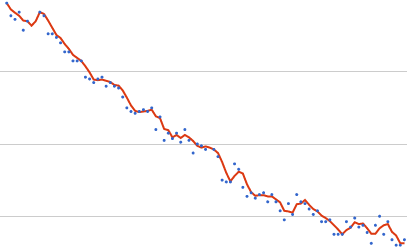We have almost all the elements to execute on Project Awesome. Now we know Why we chose to get fit and healthy, and What we’re going to do to get there. The final component is How. I work for a company that has a culture of making decisions based on two things: Goals and Measurement. You can’t change something if you can’t count it. You can’t achieve what you want if you can’t prove that you got there.
Goals
We all have a general idea of where we want to be, but to really get there, we need to be more specific. In fact, that’s the first component of the SMART acronym. This is a really useful mnemonic for setting goals that we can actually meet. We use them at work all the time, and the gym asked me to set some SMART goals when I started my 12-week challenge. Here they are:
- Get down to 100kg
- Fit into my wedding clothes again
- Run 5km in 30 minutes
I went for variety here: a weight goal, a size goal, and a fitness goal. I set myself to hit all of those in 12 weeks, and I consulted with a Personal Trainer to make sure that they were achievable and realistic within the timeframe.
Measurement
This is key. We’ve set goals that are specific and measurable, so we better measure them. The size goal I only measured on an ad-hoc basis: I occasionally checked the notch I was using on my belt, and kept going back to that awesome pirate coat until it fit well.
For the other two, I was much more active in my measurement, and that created a feedback loop into modifying my behaviour.
Measuring your weight, and tracking your progress is trivial: bathroom scales are easy to find and use, and spreadsheet software is pretty ubiquitous. However, there are some gotchas with weight tracking.
Most trainers and nutritionists probably recommend that you only weigh yourself once a week. I think this is mostly to stop any negative psychological effects of the occasional day-to-day weight gain. I know that putting on that hard-won kilo can be a confidence shaker when you’re starting out (even prepared for it, it sometimes took my by surprise), but if you can steel yourself, I recommend a daily weigh-in.
More data points give us better opportunities for establishing trends. I’m no statistician, but I know that moving averages allow us to smooth out those occasional bumps and find a smoother line that tells a better story. Here is what my three-day moving average looked like over the 12 week program.

While it’s not a smooth curve, you can see that it’s nowhere near as jaggy as directly joining the dots. Sometimes the three-day average was higher than my actual weight for the day. But the general trend was almost always down. That helped keep me going. Here are my charts for the last three months.

Yellow: 3-day average
Red: 7-day average
You can see how less likely it is for the 7-day average to respond to one-off fluctuations that might be caused by fluid retention, or the occasional “cheat day.”
If you track your food and exercise, you can start to see a correlation between the two and your weight, which I found to be a great motivator, making it easier to tweak my behaviour further!
Tracking your exercise is also really easy. If you like running, cycling or rowing then I can recommend RunKeeper. You can do all the usual manual data entry… or install the app on your phone, enable GPS and let it do all the hard work. I quickly found that I do better outdoors than on a treadmill, which is great because running outside gives me a better sense of progress, and I’m less likely to get bored. I eventually also added a heart rate monitor to the mix. As you get fitter, you can do the same exercise at a lower heart rate, so measuring HR on the same route was another good way to measure my progress.
For non-cardio activities, I recommend Fitocracy [that’s my referral link if you want to give it a try]. It’s kind of a Facebook for fitness, except with less privacy. Everyone can see what you do, and it’s all designed to be positive and encouraging. Even if you don’t appreciate the social aspect, the thing that I get the most out of is the game. Your activities give you points, and with points you level up. Different activities have different values, so to level up, you will gravitate towards higher-scoring (and theoretically harder) exercises. For those who play Xbox, you can also earn achievements by taking on specific tasks.
I tracked RunKeeper and Fitocracy information as well as my weight, to help track both my activities and my progress. Having a record of what I did helped prompt me to act and kept me going when my motivation flagged a little.
Food tracking is also important. We might pride ourself on the quality of our food, but there’s only one way to prove it: write down what you eat. I didn’t count every mouthful, and I certainly didn’t count my calories, but my daily food journal made me conscious of what went into my mouth, and it helped me focus on what needed to change.
So there you have it: three easy steps to getting fit and healthy. If you treat it like a project, set SMART goals, and stick to a routine of activities that you really enjoy and are able to measure, you will create new habits.
